At Fullness of Life Chiropractic, we believe in offering holistic solutions to your physical ailments. Tennis elbow, medically known as lateral epicondylitis, is a common condition characterized by pain in the outer part of the elbow and is often caused by overuse of the forearm muscles and tendons. It’s not just tennis players who experience this; many people from different walks of life can suffer from tennis elbow. So, if that nagging pain in your elbow has been bothering you for a while, it might be time to consider chiropractic care as an alternative treatment.
Chiropractic care, as many already know, is a non-invasive approach to health and wellness. Instead of relying on medications or surgeries, chiropractors use hands-on techniques to align the spine and other parts of the body, promoting natural healing. But how exactly does this relate to tennis elbow?
To understand the connection, it’s essential to know that the pain in your elbow doesn’t just stem from local inflammation or strain. The whole musculoskeletal system is interconnected. A misalignment in one area, say the spine or the wrist, can result in pain or dysfunction in another, like the elbow. By addressing these misalignments and ensuring the body is in harmony, chiropractors can alleviate the symptoms of tennis elbow and set the foundation for long-term healing.
At Fullness of Life Chiropractic, our approach begins with a thorough assessment. We want to understand the root cause of your pain. Is it a direct result of repeated activities like playing tennis, typing, or painting? Or could there be an underlying spinal misalignment contributing to the issue? Once we have a comprehensive view, our trained chiropractors tailor a treatment plan suited to your unique needs.
One of the primary techniques we employ is chiropractic adjustments. These are gentle, controlled forces applied to specific joints to restore proper function and mobility. In the case of tennis elbow, these adjustments might not just be limited to the elbow joint. We may also focus on the wrist, shoulder, and cervical spine to ensure a holistic treatment approach.
Soft tissue therapies, like myofascial release and trigger point therapy, also play a crucial role in treating tennis elbow. These techniques help break down scar tissue, alleviate muscle tightness, and enhance blood flow to the affected tendons, facilitating quicker healing. Combined with chiropractic adjustments, soft tissue therapies can significantly reduce pain and inflammation while increasing the range of motion.
While the hands-on treatments are essential, our care does not stop there. We believe in empowering our patients with the knowledge and tools they need to prevent future flare-ups. This often includes recommending specific exercises that strengthen the forearm muscles, teaching proper techniques for activities that might exacerbate the condition, and offering ergonomic advice for daily tasks.
One of the most rewarding aspects of chiropractic care is its ability to treat conditions like tennis elbow without resorting to medications or invasive procedures. Painkillers might offer temporary relief, but they do little to address the root cause. Conversely, the chiropractic approach promotes the body’s innate ability to heal itself. By creating an optimal environment for healing through adjustments, soft tissue therapies, and patient education, we set the stage for not just relief, but genuine recovery.
Exploring Chiropractic Solutions for Tennis Elbow at Fullness of Life Chiropractic
Tennis elbow, also known as lateral epicondylitis, can be a debilitating condition, causing discomfort and pain. Many are often curious about the best treatments available. Here at Fullness of Life Chiropractic, we frequently get questions about the efficacy of chiropractic care for treating tennis elbow and how it compares to other therapies. Let’s dive into some of the most commonly asked questions.
- Can a chiropractic adjustment help tennis elbow?
- Absolutely. Chiropractic adjustments focus on restoring proper joint function and alignment. Misalignments can aggravate the tendons and muscles around the elbow, leading to tennis elbow symptoms. By correcting these misalignments, chiropractic care can reduce pain and promote healing.
- Can tendonitis be cured by a chiropractor?
- Tendonitis, an inflammation of the tendons, often results from repetitive strain or acute injuries. Chiropractors, with their expertise in musculoskeletal disorders, can:
- Offer adjustments to alleviate strain on the affected tendons.
- Provide soft tissue therapies to reduce inflammation.
- Give recommendations on exercises and stretches to strengthen the area and prevent recurrence.
- Is chiropractic or physiotherapy better for tennis elbow?
- Both chiropractic care and physiotherapy offer effective solutions, and the choice often depends on individual preference and specific needs. Here’s a comparative insight:
- Chiropractic Care: Focuses on structural alignment and joint function. Chiropractors might use adjustments, soft tissue therapies, and advice on lifestyle modifications to treat tennis elbow.
- Physiotherapy: Concentrates on rehabilitating the injured area through exercises, stretches, and sometimes manual therapies. Physiotherapists aim to restore movement, strength, and functionality.
- Ultimately, some patients find a combination of both chiropractic and physiotherapy to be the most beneficial.
- Which therapy is best for tennis elbow?
- The “best” therapy is subjective and varies from person to person. Some factors to consider include:
- Severity of Symptoms: In acute cases, gentle chiropractic adjustments combined with physiotherapy might provide quick relief.
- Underlying Causes: For structural misalignments, chiropractic care is often the first line of treatment. But if muscle weakness or imbalances are contributing factors, physiotherapy becomes crucial.
- Personal Preference: Some individuals might prefer the hands-on approach of chiropractic care, while others might lean towards the rehabilitative exercises of physiotherapy.
- Holistic Approach: For a comprehensive treatment plan, it might be beneficial to consider both chiropractic care and physiotherapy. This dual approach addresses both structural and muscular aspects of the condition.
Tennis elbow, though a painful and often frustrating condition, can find relief and healing through chiropractic care. At Fullness of Life Chiropractic, we are dedicated to understanding your unique situation and providing treatments that bring about real, lasting change. So, if you or someone you know is struggling with the discomfort of tennis elbow, remember that there’s a holistic, non-invasive solution just a call away. Let us help you restore strength, function, and fullness to your life.
